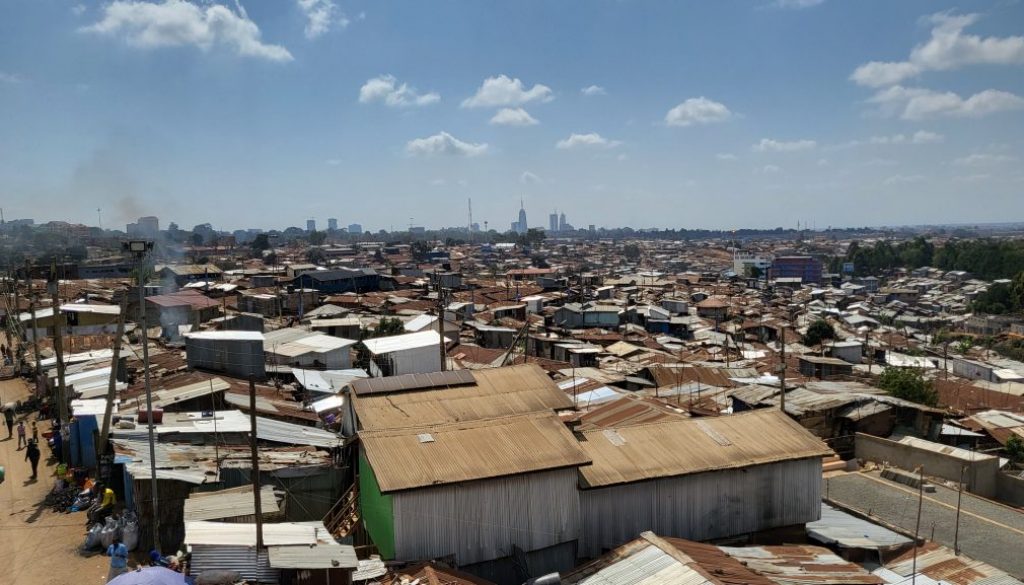Is housing still a major issue in slums?
Jacob Omondi reports on housing issues in Mathare slum, Kenya.
Informal settlements can be dysfunctional due to lack of organization as well as neglect by the Government when it comes to channeling funding and resources towards housing development. Allocating resources to support housing should be given more attention in order to eliminate social and structural inequality.
Currently access to decent housing is disparate.
Profiling Mathare
The Mathare slum is the second largest slum in Kenya after Kibera. It is densely populated with a population of around 500,000 residents. As an informal settlement Mathare faces numerous challenges, including problems with access to decent and affordable housing, unemployment, access to electricity and water, disasters such as flooding and fire, and security issues. Access to decent housing is still a major problem, with the majority of homes made from iron sheets and wood. Muungano Wa Wanaviji through Slum Dwellers International undertook a settlement profiling exercise in Mathare valley from 2021 to 2022. This revealed that the cost of renting in Mathare ranges from 1500 to 4000 shillings, with cost depending on location, for example dwellings situated near to the river are cheaper than the ones just adjacent to the roads.
Barbra Derrick was one of the data collectors narrates his experience during settlement profiling, “we first of all did a training on how to carry out settlement profiling which gave me an opportunity to learn on how to carry out mapping and enumeration, it also gave me a chance to easily understand with my community more, when it comes to the population, household income level, cost of housing, services available among others. Informal settlements normally lug behind when it comes to infrastructural development we hope that the settlement profiling will bring positive results that will help improve our living standards.”
Employment
The Mathare settlement is adjacent to Nairobi’s Central Business District. Many Mathare residents work in Nairobi’s Central Business District (CBD) as casual laborers, while others run small scale businesses selling goods and food, and driving taxis and other public service vehicles. However, the rate of unemployment in Mathare is still very high among young people.
Electricity
Electrical connectivity is also a major challenge in Mathare. Most residents are connected illegally, due to the fact these connections are cheaper to install and payment is monthly. However these connections are frequently unsafe and therefore highly dangerous, with risk of fire and electrocution sometimes leading to damage to houses and loss of life.
Disaster management
Houses built in slums are more likely to be affected by major disasters such as floods. During heavy rainfall dwellings are more likely to be affected by flooding especially those near the river. In 2013 in Mathare a landslide destroyed many houses, and killed a number of residents. Due to such dangers, housing costs are lower in more high risk areas leading to vulnerable people being more likely to live near disaster prone areas.
Water and sanitation
Certain areas of Mathare experience regular water rationing, while other areas are serviced by illegal water suppliers meaning they rarely experience the same rationing, due to the illegal supplier’s influence and network in the community. Water is basic commodity that should be provided for free, however people are still forced to buy water at variable prices – ordinarily a 20 litre jerrican costs five shillings, however during a water shortage the cost rises to 20 shillings for the same amount. Due to a scarcity of sanitation facilities, and a lack of proper sewerage systems, large amounts of liquid waste is channeled into the Mathare River, resulting in serious health risks.
Conclusion
In conclusion, it is time the Government gave priority to providing more safe and affordable housing in informal settlements. The Government needs to introduce policies and initiatives to regulate the cost of housing, reduce the risk of disasters such as fire and flood, and regulate the supply of water and electricity.
Image credit: Image by astepforever is licensed by iStock
